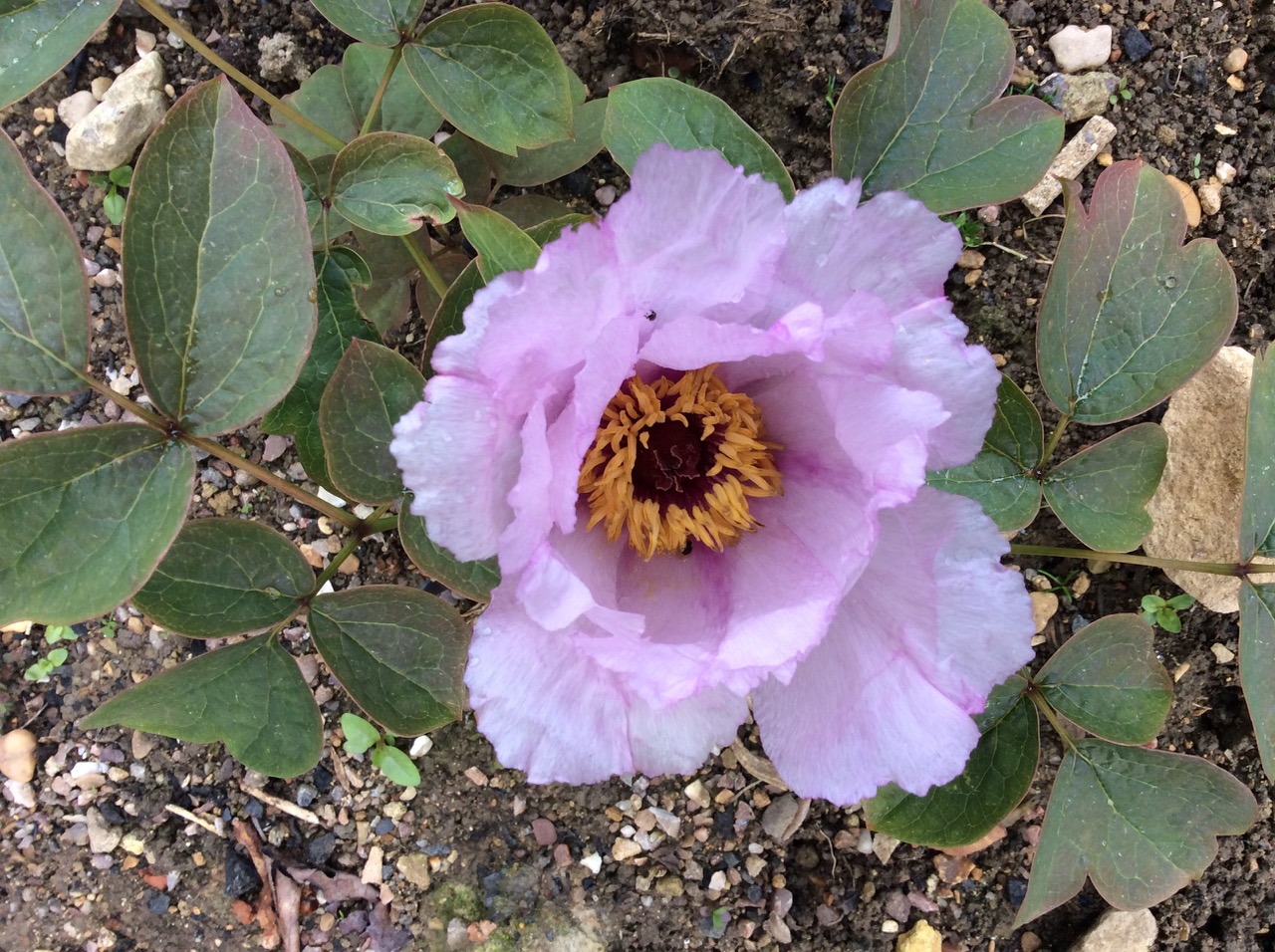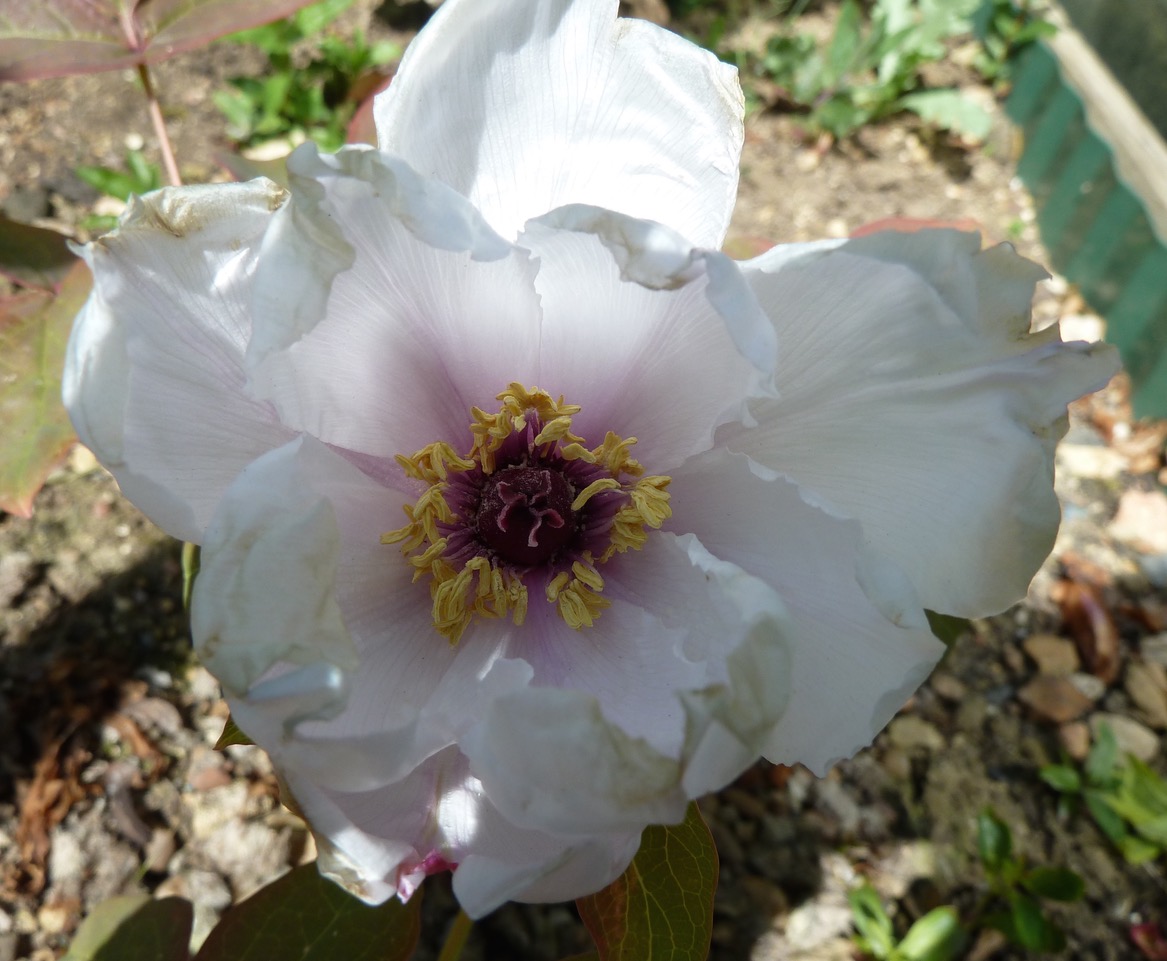Paeonia qiui
Sponsor
Kindly sponsored by
Sponsored by David Sayers in memory of Hedvika Fraser.
Credits
Julian Sutton (2020)
Recommended citation
Sutton, J. (2020), 'Paeonia qiui' from the website Trees and Shrubs Online (treesandshrubsonline.
Genus
Common Names
- luan ye mu dan
Synonyms
- Paeonia ridleyi Z. L. Dai & T. Hong
- Paeonia suffruticosa var. qiui (Y. L. Pei & D. Y. Hong) Halda
Other taxa in genus
- Paeonia cathayana
- Paeonia Central Plains Cultivars
- Paeonia decomposita
- Paeonia delavayi
- Paeonia Gansu Cultivars
- Paeonia Itoh Cultivars
- Paeonia Japanese Cultivars
- Paeonia jishanensis
- Paeonia × lemoinei
- Paeonia ludlowii
- Paeonia Lutea Hybrids
- Paeonia ostii
- Paeonia Other Shrubby Hybrids
- Paeonia rockii
- Paeonia rotundiloba
- Paeonia Southern Yangtze Cultivars
- Paeonia Southwest Cultivars
- Paeonia × suffruticosa
Shrub to 1.2 m, sometimes reproducing vegetatively by elongated underground stems. Stems grey or brown-grey, longitudinally striate. Lower leaves biternate, with 9 leaflets; leaflets often reddish above, more or less ovate, base rounded, apex obtuse or acute, mostly entire but terminal leaflets sometimes shallowly 3-lobed, 4–12 × 2–8 cm, usually glabrous above, densely villous in axils of major veins beneath. Flowers solitary, terminal, April–May in China; bracts 2–4, leaf-like; sepals (2–)3(–4), yellow green, apex acute or caudate, the inner one largest, 2.5–3 × 2–2.5 cm; petals 5–9, spreading, pink, often with a pale red spot at the base, 3.5–5.5 × 2–3.1 cm; filaments pink; anthers yellow; disk entirely enveloping carpels at anthesis, red-purple, leathery; carpels 5, densely tomentose; stigmas sessile, red. Follicles ellipsoid, densely brown-yellow tomentose, 2–2.8 cm long. Seeds black, glossy, 6–8 × 5–7 mm. (Hong et al. 2001; Hong 2010).
Distribution China W Henan, W Hubei; very rare but sometimes cultivated..
Habitat Deciduous forests, grassy slopes, limestone cliffs; 1000–2200 m.
USDA Hardiness Zone 5-9
RHS Hardiness Rating H6
Conservation status Not evaluated (NE)
Probably closely related to P. cathayana and P. jishanensis, this is one of the wild species to have emerged from the confusing mixture of hybrids, domesticated forms and probably wild plants once lumped under P. × suffruticosa. Pink flowered, with 9 leaflets, it is very rare and endangered in the wild, with four known populations, three of which are small and on cliffs (Hong 2010). Molecular evidence suggests that it has contributed to the hybrid woody cultivars (Zhou et al. 2014).
Plants under this name are in cultivation at low levels among peony specialists in Europe (Centro Botanico Moutan 2020) and North America (Bremer 2019). Seedlings offered in the European nursery trade are claimed to be low growing, to 50 cm, with red-brown tinted leaves, flowering late April to early May in Germany; however, they include white- as well as pink-flowered plants (Albiflora 2020; Gießler Päonien Kulturen 2020). It is worth noting though that intensity of color varies with position in the garden; Judy Templar in Britain found a single clone flowering clear pink in one site and blush in another (pers. comm. 2023, see images).


